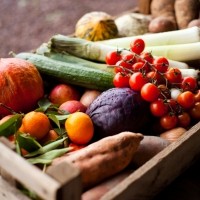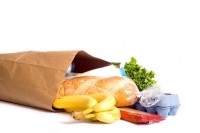'Directing’ shoppers to healthy food increases spending in this sector: Study

According to research published in the Journal of Nutrition Education and Behaviour, consumers spent more on fruit and vegetables when large, green arrows were positioned on the floor of a supermarket indicating where the fruit and vegetables produce section was located.
Further experiments revealed that the floor arrows increased the proportion of spending on fruit and vegetables across three stores and three different time periods over the course of 14–25 days. This was achieved without consumers increasing a defined food budget.
The team from New Mexico State University believe these observations could have implications for improving the health of the general public.
Supermarket efforts

Grocery retailers face daily public pressure to make healthier produce more readily available and at a lower cost.
Supermarket efforts have included employing nutritionists to inform consumers, using nutritional profiling on products, such as the UK’s traffic light labelling system, and reformulating own-brand foods or launching healthier ranges.
Earlier studies have placed the probability of unplanned purchases in grocery stores as between 42% to 93%. These purchases have been shown to be influenced by in-store marketing.
According to the study, fruit and vegetables represent produce with the highest margins and make-up 10% of all grocery store sales and 16% of overall store profits.
“Shopper marketing innovation in this product category could spur increased profit margins for grocery stores and increased shopper purchase and consumption of fruits and vegetables— with the intent of keeping constant shoppers' budgets,” the study stated.
Two food stores were studied. One remained a control store of the same chain, where no arrows were used. The other store located 10 large green arrows, measuring around 1m x 2m on the floor of a supermarket that pointed to the fruit and vegetables section.
These arrows had accompanying instructions such as, “Follow green arrow for health,” and included images of fruits and vegetables along with emoticons.
Results from the 14-day trial indicated a significant increase in the proportion of spending on fruit and vegetables produce when compared with other food.
However, total food spending per consumer did not significantly alter between the two stores despite the increase in spending on fruit and vegetables at the store with green arrows.
Supermarket ‘racetrack’

“Knowing that the "racetrack" of the grocery store has the most traffic, people simply look for easy to understand information of what to buy,” explained Dr Collin Payne, associate professor of marketing for New Mexico State University.
“This allowed people to compare their current behaviour (direction) to what was suggested. We surmised we could find an effect.”
The team commented that if shoppers were willing to expose a significant amount of their financial resources to in-store marketing of fresh fruits and vegetables, then the conceptual framework was promising.
However, they acknowledged that it was unclear whether there was a cut-off point in which in-store marketing of fresh fruit and vegetables would begin to have a detrimental effect.
Earlier research has identified a saturation point at which consumers do not conform, resulting in decreased purchases.
“It is essential that marketing nutrition interventions are not only salient, easy to interpret, and easy to compare against shoppers' current behaviour, but that they are also not too overbearing,” the study concluded.
Source: Journal of Nutrition Education and Behaviour
Published online ahead of print, doi:10.1016/j.jneb.2016.05.001
Title: “This Way to Produce: Strategic Use of Arrows on Grocery Floors Facilitate Produce Spending Without Increasing Shopper Budgets.”
Authors: Collin Payne et al.












